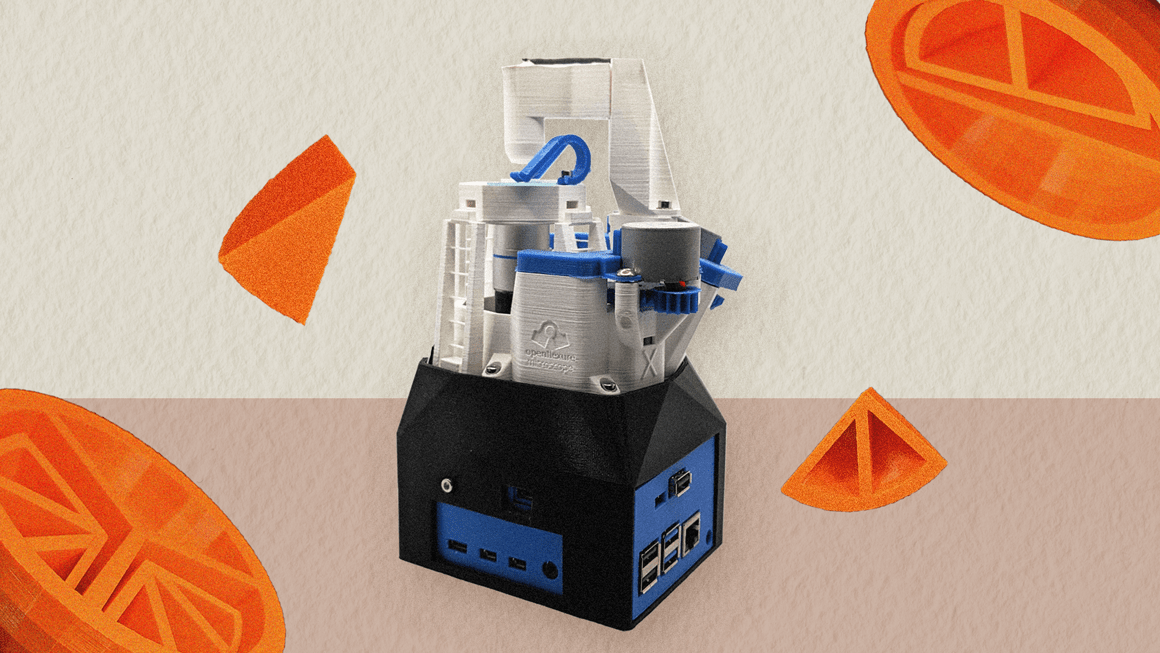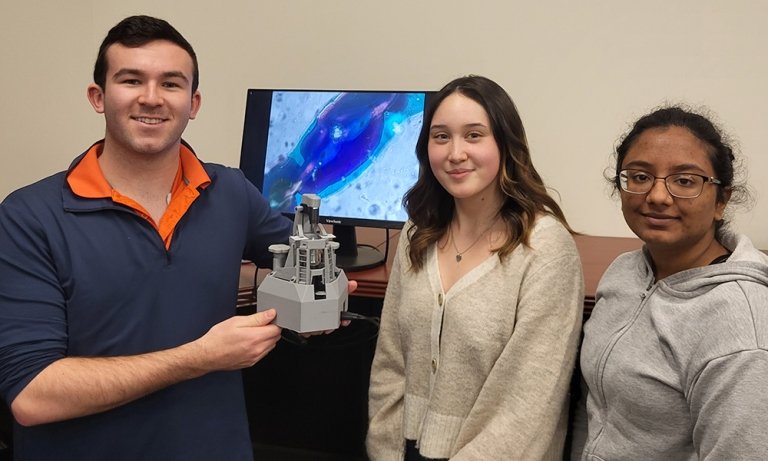
UVA Professors, Students Launch Open-Source Maker Library for Teachers
The team is developing a 3D-printed microscope that will be added to a collection of peer-reviewed educational tools in a newly launched, open-source library for schools.
Image: This 3D-printed microscope and fractions sphere are part of a new open-source library of peer-reviewed educational tools created for K-12 teachers. Graphic by Julia Parlette-Carino.
One decade ago, the White House hosted its first Maker Faire, highlighting the widespread use of fabrication tools such as 3D printers and laser cutters in schools and universities. Ever since, use of open hardware, free open-source designs that can be fabricated locally, has grown exponentially in universities.
Glen Bull, professor at the University of Virginia School of Education and Human Development, is working to make sure K-12 schools also benefit from this growth by developing an online library of computer-assisted design (CAD) models.
“There are a lot of repositories out there where teachers can search for an item to replicate and use for teaching,” Bull said. “But some of the items won't print and some of the other ones may not have any lesson plans to go with it.”
Bull is leading a national effort to expand the use of open hardware in K-12 schools through a collaboration with the national teacher educator associations in science (ASTE), mathematics (AMTE), and engineering (ITEEA). With a seed grant from the Jefferson Trust and additional funding from the National Science Foundation, the team developed the Educational CAD Model Library that extends the peer-review process typically used for research journals to open hardware tools designed for K-12 schools.
The peer-reviewed designs in the CAD Library, according to Bull, will make advanced scientific tools accessible to schools.
A team of UVA biomedical engineering students working in the School of Education’s Make to Learn Laboratory are adapting the open-source OpenFlexure microscope to be included in the library. The microscope is widely used in university research laboratories but needs to be adapted for use in high school environments.

“This 3D-printed microscope can be fabricated at significantly reduced cost in comparison with its commercial counterparts,” said Bull. “More importantly, the software can be customized to address local needs, something that is not always feasible for proprietary commercial instruments.”
Students who design and adapt tools such as the microscope—as well as the high school students who can help build it—gain a deeper understanding of these scientific instruments.
“This is a great engineering design project that will have a tremendous impact,” said Shayn Peirce-Cottler, chair of the biomedical engineering department at the UVA School of Engineering and Applied Sciences.
After working on the project in the fall semester, the team has completed a prototype that is ready for testing in schools. And for that, they won’t need to go far.
Rachel Gibson, an alumna of UVA's School of Education and a current engineering teacher at Charlottesville High School, helped develop the prototype of the CAD Library during her time at UVA. This spring, Gibson’s engineering students at the high school will test the adapted microscope.
“This will be a great opportunity for students to grow their fabrication skills and learn how to give constructive feedback on the microscope project,” Gibson said. “It should allow them to learn about the inner workings of a microscope and how they can apply their current engineering skills to something that can have a direct impact in their school.”
The CAD Library is not limited to complex projects like the microscope.
“It also includes simpler, yet equally powerful educational items, such as the Fraction Orange, a 3D printed sphere developed by teacher education students at Montclair State University to aid in understanding mathematical concepts,” Bull said. "Exploring fabricated physical objects can lead to insights in ways that mathematical formulas and diagrams alone often do not.”
Rich Nguyen, an assistant professor in UVA’s Department of Computer Science, is providing oversight for a team of computer science students who are developing the CAD Library interface. Sherry Lake, the University’s Scholarly Repository Librarian, advised the team on the development of metadata standards that provide a common language for describing objects in the CAD Library. The University of Virginia’s library also hosts the CAD Library database using open-source software.
This collaborative initiative extends beyond UVA. National education associations have provided editors and reviewers for each discipline. Educators from around the globe are contributing to this repository of resources. The project has already welcomed international contributions, such as a mechanical wave machine designed to teach wave properties submitted by a teacher in Singapore.
“By providing open access to high-quality, peer-reviewed educational resources, the CAD Library not only provides an innovative approach to supporting the diverse learning needs of teachers and their students, but it also nurtures a responsive and inclusive approach to STEM education,” Bull said.
News Information
Media Contact
Audrey Breen
